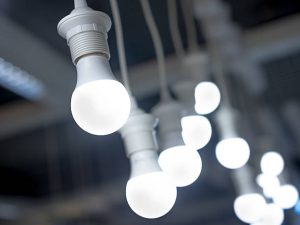
How Do Bug Zapper Lights Work To Kill Flies?
- Post author:cs_Admin
- Post published:8 August 2023
- Post category:Blog
- Post comments:0 Comments
During the summer months, a lot of businesses can be blighted by the increased swarms of insects that tend to cause problems and frustrations for agriculture.
One of the most popular and effective solutions in a wide variety of industries is the fly killer light or bug zapper, an invention over a century old that has not fundamentally changed for over nine decades since it was patented in 1931.
Part of the reason for this is that a bug zapper is a very simple, effective device that uses a two-stage process to attract and eradicate bugs.
The first step is to use an ultraviolet light that draws insects towards it, before they touch an electrified grid, completing the circuit with their body and almost immediately dying as a result.
It is a very simple device that has been largely unchanged for almost 100 years, although there have been some improvements made as our understanding of why bug zappers worked in the first place has increased.
The fluorescent bulb can sometimes be replaced with a more energy-efficient LED bulb that fulfils the same purpose but lasts considerably longer, the grid designs have changed over the years to more effectively collect bugs and use scatter-proof devices to stop bug mist spreading over the nearby area.
As well as this, a lot of bug zappers now also use extra bait or emit carbon dioxide, as researchers found that mosquitoes and other biting insects are attracted to the carbon dioxide that humans and animals breathe out rather than UV.
This is one of the reasons why a bug zapper can kill thousands of bugs in a single evening in areas where there is a lot of insect activity, although it must be noted that electricity does not discriminate between the types of insects it kills, and so whilst some of these are mosquitos, others are midges and flies.


